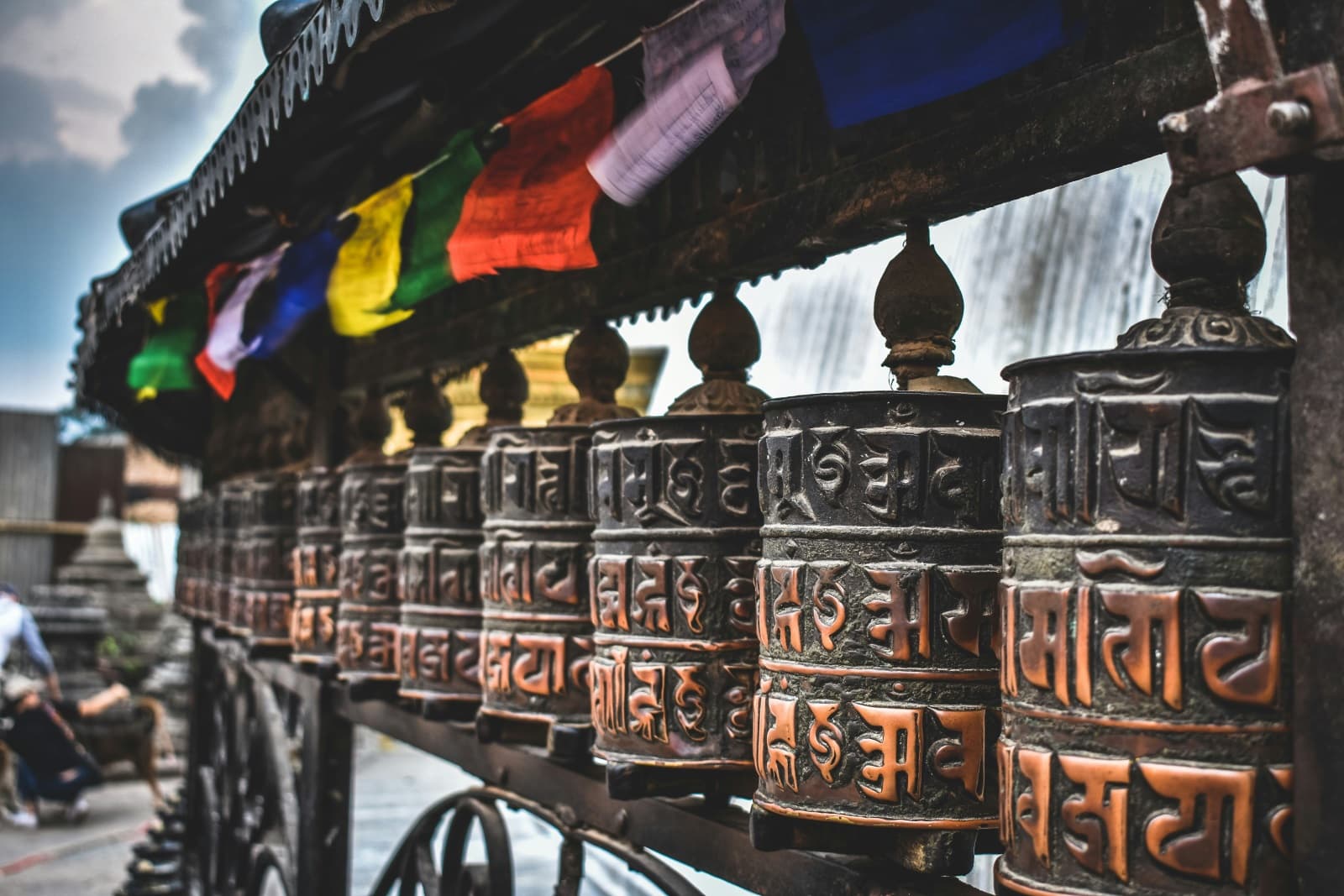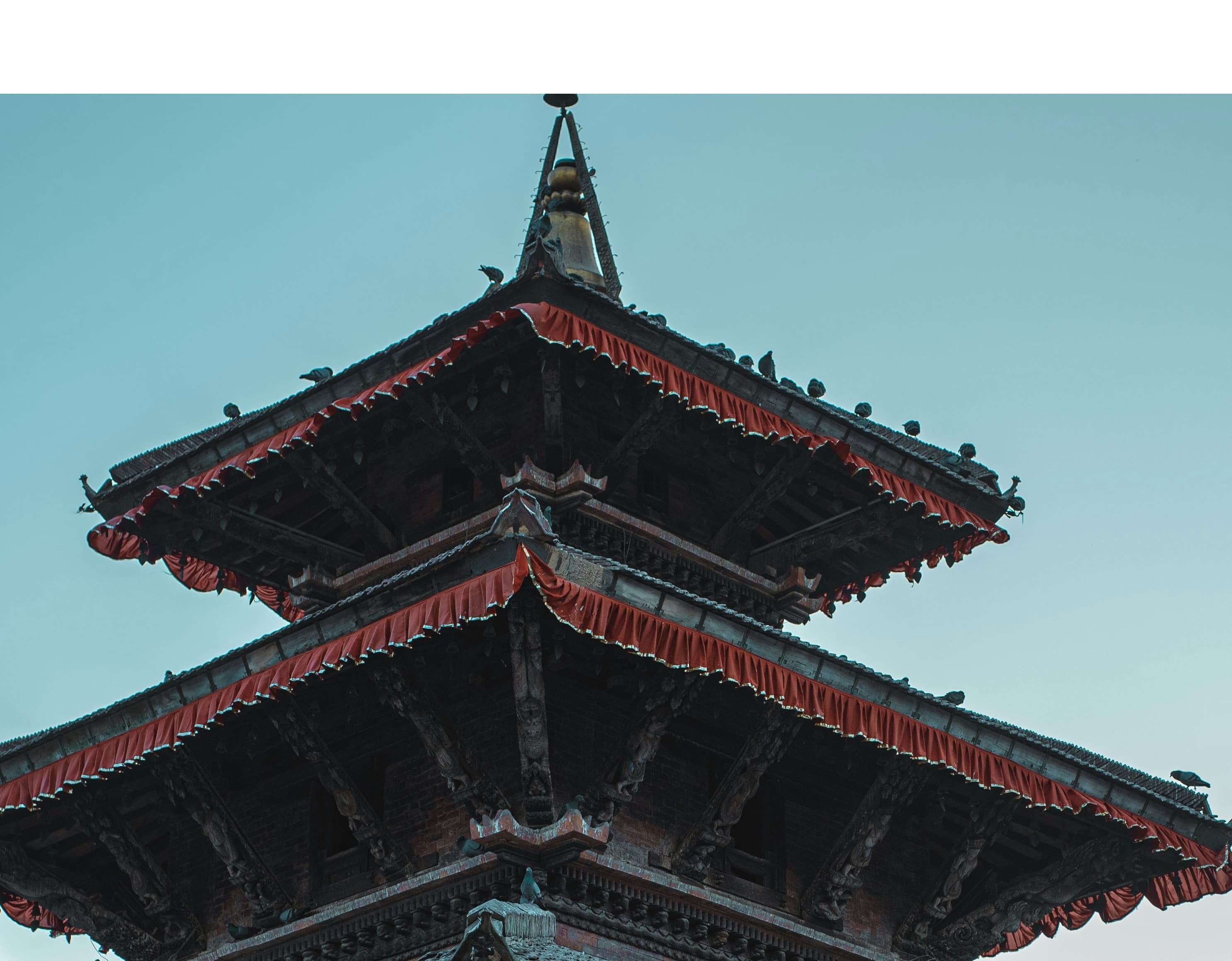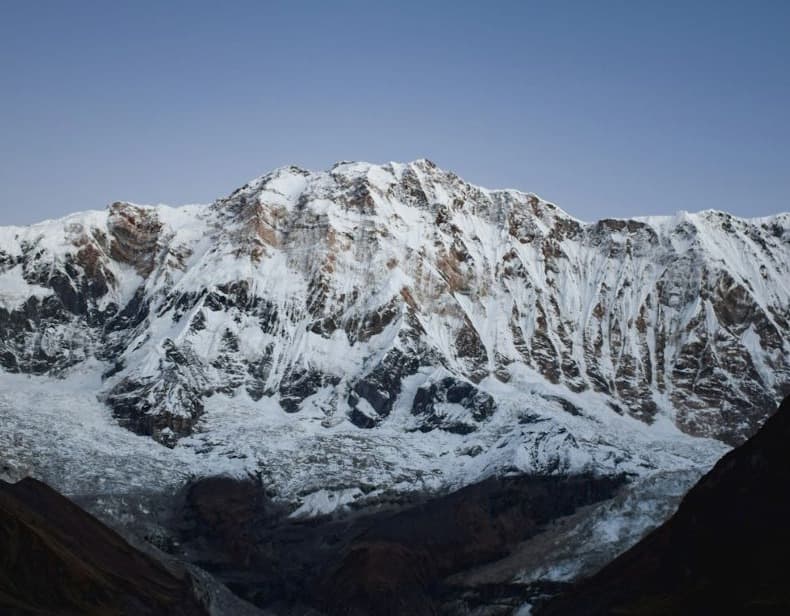"Cultural Footsteps: An Immersive Tour of Nepal" invites travelers on a captivating journey to explore the rich tapestry of Nepali culture, traditions, and stunning landscapes. This voyage is not just about trekking through the breathtaking Himalayas but also about stepping into the lives of the local communities, from the vibrant streets of Kathmandu with its ancient temples and bustling markets to the serene monasteries of Tengboche. Experience the warmth of the Sherpa community, delve into the intricate rituals of Tibetan Buddhism, and discover the architectural marvels of Patan and Bhaktapur. Your journey will take you through the terraced fields of the Annapurna foothills, where you'll witness the traditional farming methods still in use today. The trek promises not only a physical adventure but a spiritual awakening, as you participate in age-old ceremonies and festivals, revealing the deep connection between the Nepali people and their environment. "Cultural Footsteps" is an invitation to immerse yourself in Nepal's unique heritage, offering insights into the resilience and hospitality of its people, set against the backdrop of the most majestic mountain range on earth. Join us to forge unforgettable memories and a profound connection with the heart and soul of Nepal.
Information of Neplease Culture Fact:
Nepali culture is a rich mosaic of ethnic diversity, historical depth, and vibrant traditions that have shaped the identity of Nepal and its people. Understanding the facts about Nepali culture and its importance offers insights into how this unique cultural landscape contributes to the nation's character and resilience. Here are some key aspects:
Ethnic Diversity: Nepal is home to over 120 ethnic groups, each with its own distinct language, religion, customs, and festivals. This diversity is a testament to the country's inclusive society and adds to the rich tapestry of cultural practices and beliefs.
Language and Literature: While Nepali is the official language, dozens of languages and dialects are spoken across the country. This linguistic variety enriches the nation's literary and oral traditions, including folklore, songs, and stories that pass down through generations.
Religious Harmony: Predominantly Hindu and Buddhist, Nepal is renowned for its religious tolerance and harmony. Sacred sites like Pashupatinath, Swayambhunath, and Lumbini attract pilgrims worldwide, emphasizing the spiritual unity amidst diverse religious practices.
Festivals and Celebrations: Nepali culture is marked by numerous festivals celebrated with enthusiasm and communal participation, such as Dashain, Tihar, and Losar. These festivals, rooted in religious and agricultural traditions, reinforce social bonds and cultural identity.
Cuisine: Nepali cuisine reflects its geographical and cultural diversity, ranging from the staple dal bhat (rice and lentils) to a variety of momos (dumplings) and Newari feasts. Food plays a crucial role in festivals and social gatherings, showcasing the country's rich culinary heritage.
Traditional Arts and Crafts: Nepal's art and crafts, including Thanka painting, wood carving, and weaving, are deeply influenced by religious beliefs and the natural environment. These traditional skills are not just artistic expressions but also vital aspects of Nepal's cultural heritage and economy.
Architecture: Nepali architecture is a blend of indigenous styles and influences from neighboring India, Tibet, and beyond. The intricately carved wooden windows, pagoda-style temples, and stupas are iconic features that highlight the historical and aesthetic significance of Nepali design.
Dress and Jewelry: Traditional dresses like the Daura-Suruwal for men and the Gunyo-Cholo for women are symbols of Nepali identity. Jewelry and ornaments, often made of precious metals and stones, carry cultural and religious significance.
Social Structure and Practices: The joint family system and community-oriented social practices emphasize collective well-being and social cohesion. Rituals and customs surrounding birth, marriage, and death are integral to Nepali cultural life, reflecting deep-rooted values and beliefs.
Conservation of Culture: Despite modernization and globalization, Nepal continues to conserve its cultural heritage through festivals, traditional practices, and the preservation of historical sites. This commitment ensures that future generations can understand and appreciate their rich cultural legacy.
Important of Nepalese Culture in Nepal Tours:
The importance of Nepalese culture in Nepal tours cannot be overstated, as it significantly enriches the travel experience, providing depth and context to the breathtaking landscapes the country is renowned for. Here are key aspects highlighting the importance of Nepalese culture in Nepal tours:
Cultural Immersion: Nepal tours offer a unique opportunity for cultural immersion. Visitors can experience traditional Nepalese lifestyles firsthand, from staying in teahouses in remote Himalayan villages to participating in local festivals. This immersive experience fosters a deeper understanding and appreciation of the country's customs, traditions, and way of life.
Historical Insight: Nepal's rich history is intricately woven into its cultural fabric. Tours often include visits to ancient temples, palaces, and UNESCO World Heritage Sites in Kathmandu Valley and beyond, offering insight into the country's historical kingdoms, architectural marvels, and the influence of Buddhism and Hinduism.
Spiritual Enrichment: The spiritual diversity and tolerance in Nepal are remarkable. Tours to sacred sites like Pashupatinath Temple, Swayambhunath Stupa, and Lumbini provide not just a serene experience but also a profound understanding of the spiritual practices and beliefs that guide daily life in Nepal.
Community and Hospitality: Nepalese culture is synonymous with warm hospitality. Tours allow visitors to engage with local communities, share meals, and hear stories, thereby creating meaningful connections. This aspect of Nepalese culture enhances the overall experience, leaving lasting impressions on travelers.
Cultural Preservation: Participating in tours that respect and contribute to the preservation of local culture and heritage helps support conservation efforts. It ensures that the traditions, languages, and crafts that define Nepalese culture are sustained for future generations.
Artistic Exploration: Nepal's rich artistic heritage, seen in its dance, music, and crafts, is a highlight of cultural tours. Experiencing traditional art forms, whether it's observing a classical dance or visiting artisan workshops, provides insight into the creative expressions that have been passed down through centuries.
Culinary Adventures: Nepalese cuisine is a reflection of its cultural diversity. Tours often include culinary experiences that allow travelers to savor local flavors, learn about the ingredients and techniques used in Nepalese cooking, and even participate in cooking classes.
Understanding of Social Dynamics: Tours that explore different regions of Nepal expose visitors to the country's ethnic diversity and social dynamics. Understanding the roles of different ethnic groups, their traditions, and how they coexist adds a rich layer to the travel experience.
Economic Support: By engaging with and supporting cultural tours, visitors contribute to the local economy, supporting guides, artisans, and small businesses. This economic aspect is crucial for many communities where tourism is a significant source of income.
Enhanced Travel Experience: Ultimately, the incorporation of Nepalese culture into tours significantly enhances the travel experience, transforming it from merely seeing to truly experiencing Nepal. It allows travelers to connect on a deeper level with the country, its people, and its heritage.
FAQs Related to Nepalese Culture :
What are the main religions practiced in Nepal?
Nepal is primarily a Hindu country, with Buddhism also widely practiced. The two religions coexist harmoniously, and you'll find many temples and stupas throughout the country. Other religions include Islam, Christianity, and indigenous practices.
Can I participate in local festivals during my visit?
Yes, visitors are often welcomed to observe and sometimes participate in local festivals. It's a great way to experience Nepalese culture firsthand. However, it's important to respect local customs and traditions, and always ask for permission before taking photographs.
What is the significance of the prayer flags I see in Nepal?
Prayer flags are an important aspect of Tibetan Buddhism, believed to promote peace, compassion, strength, and wisdom. The flags are often found strung along mountain ridges and peaks high in the Himalayas to bless the surrounding countryside.
What should I wear when visiting temples and religious sites in Nepal?
When visiting temples and religious sites, it's important to dress modestly. Cover your shoulders, chest, and knees as a sign of respect. Removing shoes before entering a temple is also a common practice.
How important is the caste system in Nepal today?
While the caste system is legally abolished in Nepal, it still influences social interactions and practices in some areas, particularly in rural communities. However, urban areas and younger generations are moving towards more egalitarian views.
What are some common Nepalese customs I should be aware of?
Common customs include using your right hand to eat and receive items, removing your shoes before entering someone's home, and greeting people with "Namaste" accompanied by a slight bow and palms pressed together.
What traditional Nepalese dishes should I try?
Dal Bhat (lentils, rice, and vegetables) is a staple dish in Nepal. Other must-try dishes include momo (dumplings), gundruk (fermented leafy green vegetable), and sel roti (a sweet rice doughnut).
Are there any taboos I should be aware of when interacting with locals?
One important taboo is touching someone with your feet or pointing your feet at someone, as feet are considered impure. It's also polite to avoid showing affection in public and discussing sensitive topics like politics and religion without invitation.
How can I support local communities while traveling in Nepal?
Supporting local businesses, buying local handicrafts, eating at local restaurants, and using local guides and porters are effective ways to contribute to the local economy. Additionally, respecting cultural practices and the environment helps support community well-being.
What languages are spoken in Nepal, and how widely is English understood?
Nepali is the official language, with over 120 other languages spoken across the country. English is widely understood in major cities, tourist areas, and by younger generations, but less so in remote rural areas. Learning a few basic phrases in Nepali can be greatly appreciated.
Best Cultural Tours in Nepal
Nepal, a country of breathtaking landscapes and rich cultural heritage, offers a myriad of experiences that go beyond the conventional trekking adventures. Cultural tours in Nepal immerse travelers in the nation's profound historical, spiritual, and communal traditions, providing a deeper understanding of the diverse tapestry of life in this Himalayan realm. Here are descriptions of four exemplary cultural tours that showcase the best of Nepal's cultural richness:
Kathmandu Valley Cultural Tour
Duration: 5-7 Days
This tour takes you through the heart of Nepal's historical and spiritual life, exploring the ancient cities of Kathmandu, Patan, and Bhaktapur. Each city is home to UNESCO World Heritage Sites, including the sacred Pashupatinath Temple, the stupas of Swayambhunath and Boudhanath, and the architectural marvels of Durbar Squares. Travelers will delve into the rich tapestry of Hindu and Buddhist traditions, witness centuries-old rituals, and marvel at the exquisite craftsmanship of Newari artisans. This tour is an excellent introduction to the complex layers of Nepali culture, offering insights into the historical significance and spiritual depth of these ancient cities.
Lumbini Pilgrimage Tour
Duration: 3-4 Days
Lumbini, the birthplace of Lord Buddha, is a pilgrimage destination of profound peace and spirituality, attracting visitors from around the globe. This tour focuses on exploring the sacred garden where Buddha was born, the Maya Devi Temple, and various monasteries and stupas built by international Buddhist communities. The tour provides a serene experience, offering space for reflection amidst the monastic zones and meditation centers. It's a journey that connects travelers with the foundational principles of Buddhism and the universal quest for peace and enlightenment.
Ethnic Villages Cultural Trek
Duration: 10-12 Days
This unique trek goes beyond the well-trodden paths to explore the vibrant cultures of Nepal's ethnic communities, including the Tamangs, Gurungs, and Magars. It combines moderate trekking with cultural immersion, allowing travelers to stay in traditional villages, participate in daily activities, and learn about local customs, handicrafts, and agricultural practices. The tour also offers spectacular views of the Himalayas, enriching the cultural journey with Nepal's natural beauty. This experience highlights the importance of sustainable tourism and the preservation of traditional ways of life.
4. Spiritual Muktinath Tour
Duration: 8-10 Days
A tour designed for those seeking spiritual growth and understanding, this journey explores Nepal's rich tapestry of religious traditions. Visiting sacred sites in and around Kathmandu, Pokhara, and other spiritual hubs, travelers will have the opportunity to engage in meditation, yoga sessions, and rituals led by Buddhist monks and Hindu priests. Highlights include visits to the meditation caves in Pharping, the Peace Pagoda in Pokhara, and attending aarti ceremonies on the banks of the Trishuli River. The tour is an exploration of inner peace and spiritual wisdom, set against the backdrop of Nepal's stunning landscapes.



